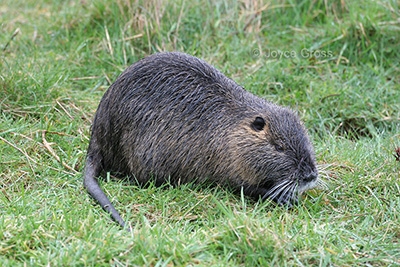June 1 through June 9, 2019 is California Invasive Species Action Week. According to the CA Department of Fish and Wildlife (CDFW), the purpose of CA Invasive Species Action Week is to “increase public awareness of invasive species issues and promote public participation in the fight against California's invasive species and their impacts on our natural resources.” CDFW describes prevention as the most important action toward managing invasive species. Invasive species negatively impact our resources, including water and native plants and animals, but they also impact our way of life, including agriculture, recreation, our economy, and human health.

As of May 22, 2019, 510 nutria have been taken in California, most in Merced County. They have also been detected in Stanislaus, San Joaquin, Fresno, Tuolumne, and Mariposa counties. In the San Joaquin County Delta, nutria were found near the City of Lathrop in 2018; however, in May 2019, one nutria was detected at Rough and Ready Island in Stockton, indicating that they have moved north.
Unlike other rodents found in the Delta – like muskrats, otters, and beavers – nutria are not native. (Hence, I'm highlighting them during Invasive Species Action Week!) Adult body size is about 2 feet in length, tail length is about 1 foot, and weight is approximately 10-20 pounds. They have partially webbed back feet, which they use to propel themselves in water. They have white whiskers and often have orange teeth. They are primarily active at night.
CDFW is working to eradicate nutria, and you can help in their efforts. Please report sightings by calling 866-440-9530, or by emailing invasives@wildlife.ca.gov. Land owners may take nutria by legal means to protect crops and property, and it is illegal to import, transport, or possess them in California. More information about reporting sightings, eradication efforts, takings, and identification (including photographs) is available from the CDFW website. It is important that we work together to prevent the expansion of this or other invasive pests in California.